
New York plumbers are some of the priciest in the nation. High cost of living and aging buildings contribute to their hefty price tag. Learn the other factors affecting how much a plumber costs in New York City.
These units are practically radiating with potential


Selecting the size and type of radiator that’ll properly heat your space requires precise calculations from an HVAC professional.
The most common radiator types are steam, hot water, electric, cast iron, panel, baseboard, and towel.
Some radiators offer a stylistic benefit, such as cast-iron models used in vintage homes and panel radiators, which provide a sleek, ultra-modern aesthetic.
When winter hits, we’re all reaching for a mug of hot cocoa and trying to find the warmest spot in the house. If you have a radiator, you know exactly where the toastiest spot will be. But did you know that some types of radiators are more efficient than others? Radiators are often grouped by their source of heat, the material they’re made of, or their shape and style. The most common types of radiators are steam, hot water, electric, cast iron, panel, baseboard, and towel radiators.
| Steam Radiators | Hot Water Radiators | Electric Radiators |
|---|---|---|
| Cast iron radiators | Cast iron radiators | Baseboard radiators |
| Towel radiators | Panel radiator | Standalone/portable radiators |
| Towel radiators | ||
| Baseboard radiators |
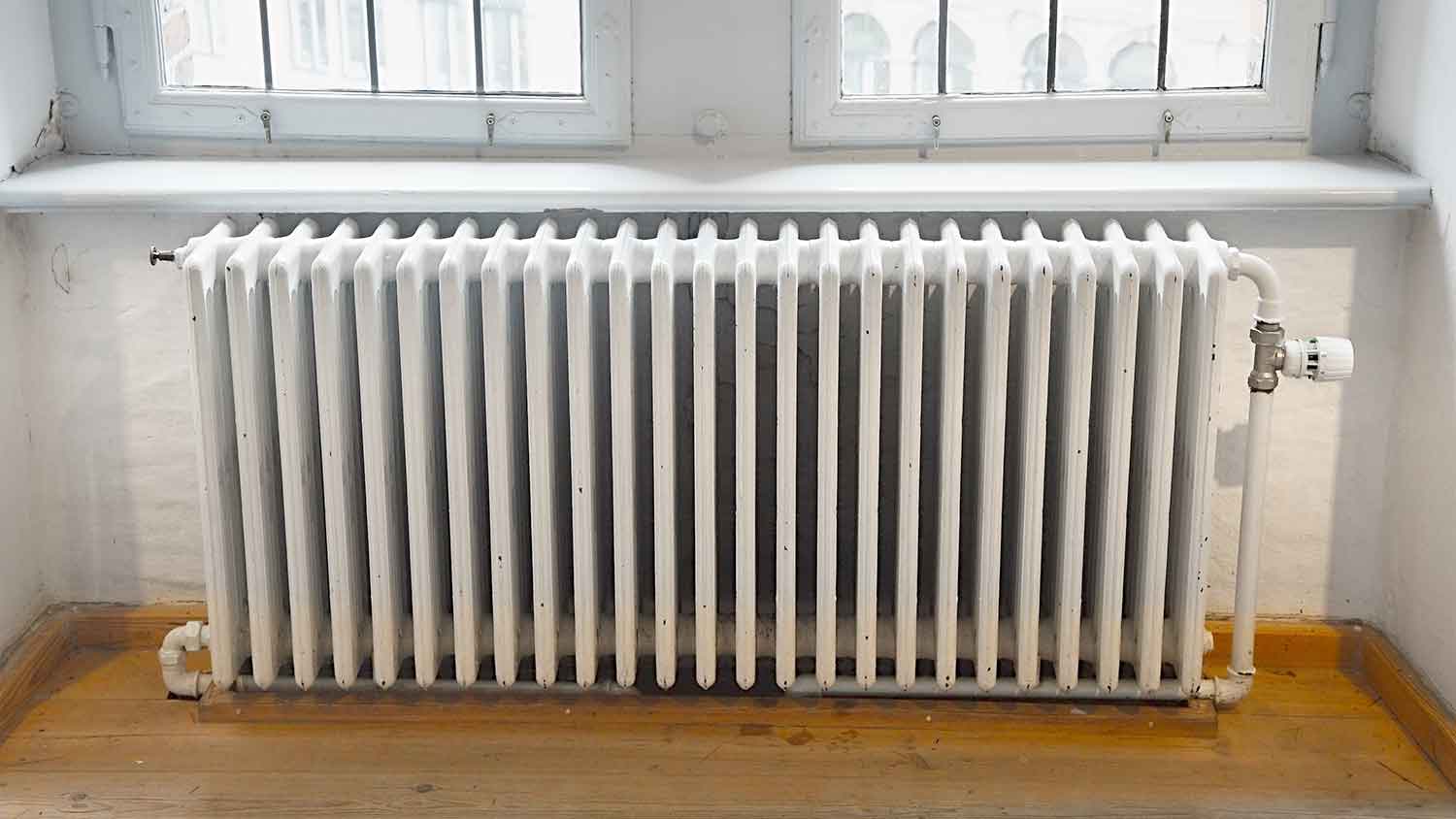
When you turn on a steam radiator, a boiler heats water into steam and sends it through the pipes to the radiator. As the steam runs through the radiator, it gives off heat. Eventually, the steam cools, condenses back into water, and returns to the boiler, where it begins the process again.
Steam radiators may have one pipe or two pipes and are often made of cast iron, especially when they’re original to an older home. You need to clean out the air vents on the sides of a radiator consistently to make sure the system keeps operating efficiently.
| Pros | Cons |
|---|---|
| Durability | Can be noisy |
| Effective heat distribution | Not as good at maintaining even temperatures |
| Cost-effective | Requires regular maintenance to avoid valve problems and corrosion |
Best for: Historic homes and homes with an existing steam radiator system
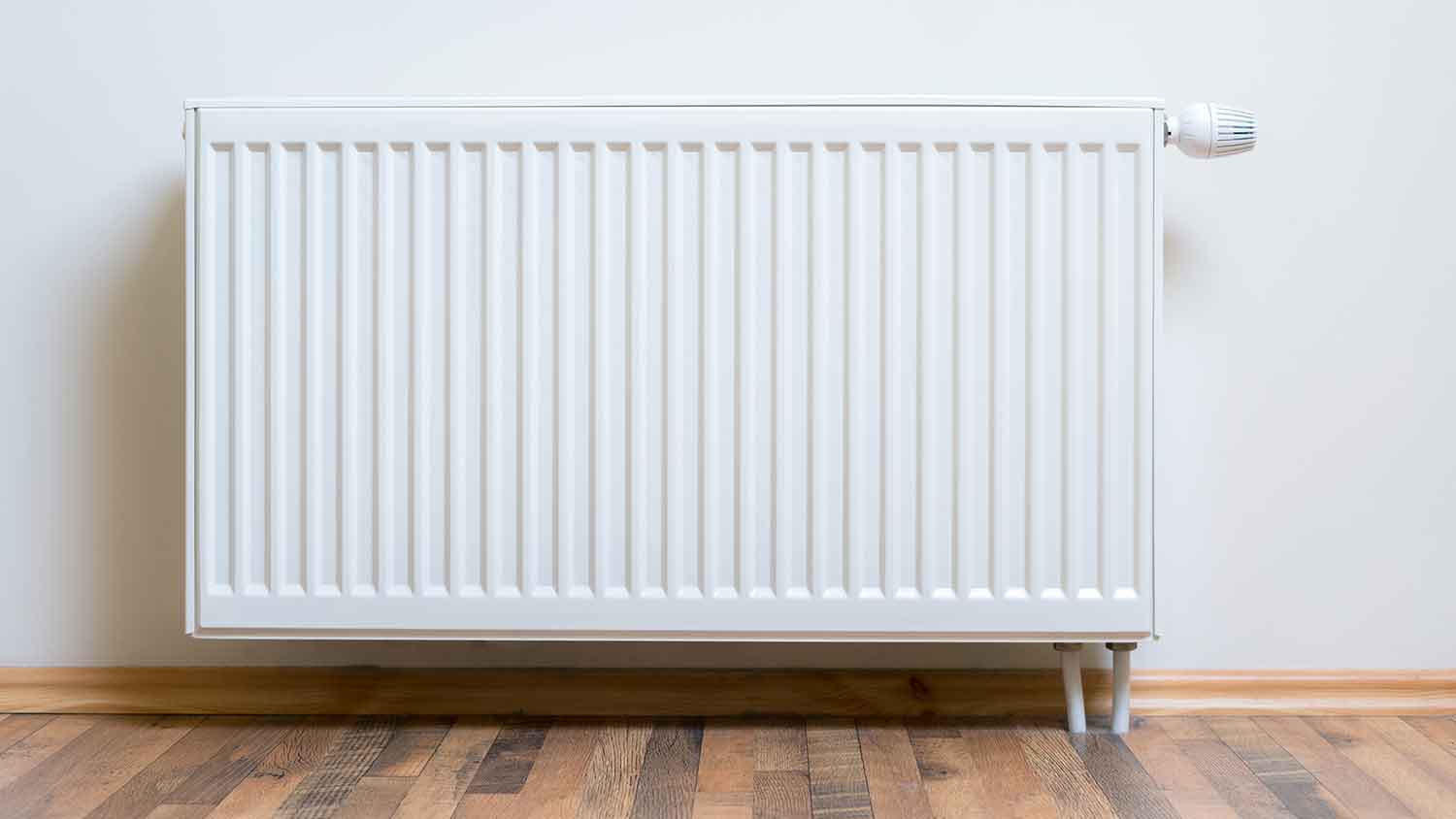
Hot water radiators work similarly to steam radiators, but the water remains a liquid instead of being boiled into steam. In a hot water radiator system, the boiler heats the water, which is then pushed through the pipes by a circulator or pump. When the water reaches the radiator, it heats up the metal, which radiates heat into the room.
Like steam radiators, hot water radiators require some maintenance on your part. You need to bleed your radiator periodically to get rid of trapped air and let the heated water flow more efficiently through the system.
| Pros | Cons |
|---|---|
| Effective heating | Requires regular bleeding of the pipes |
| Quieter operation | Slower to emit heat than other heating methods |
| Provides steady, cozy warmth | May lose some heat via pipes before it reaches the radiator |
Best for: Homes with existing boiler systems and people who want more temperature control than you get with a steam radiator system
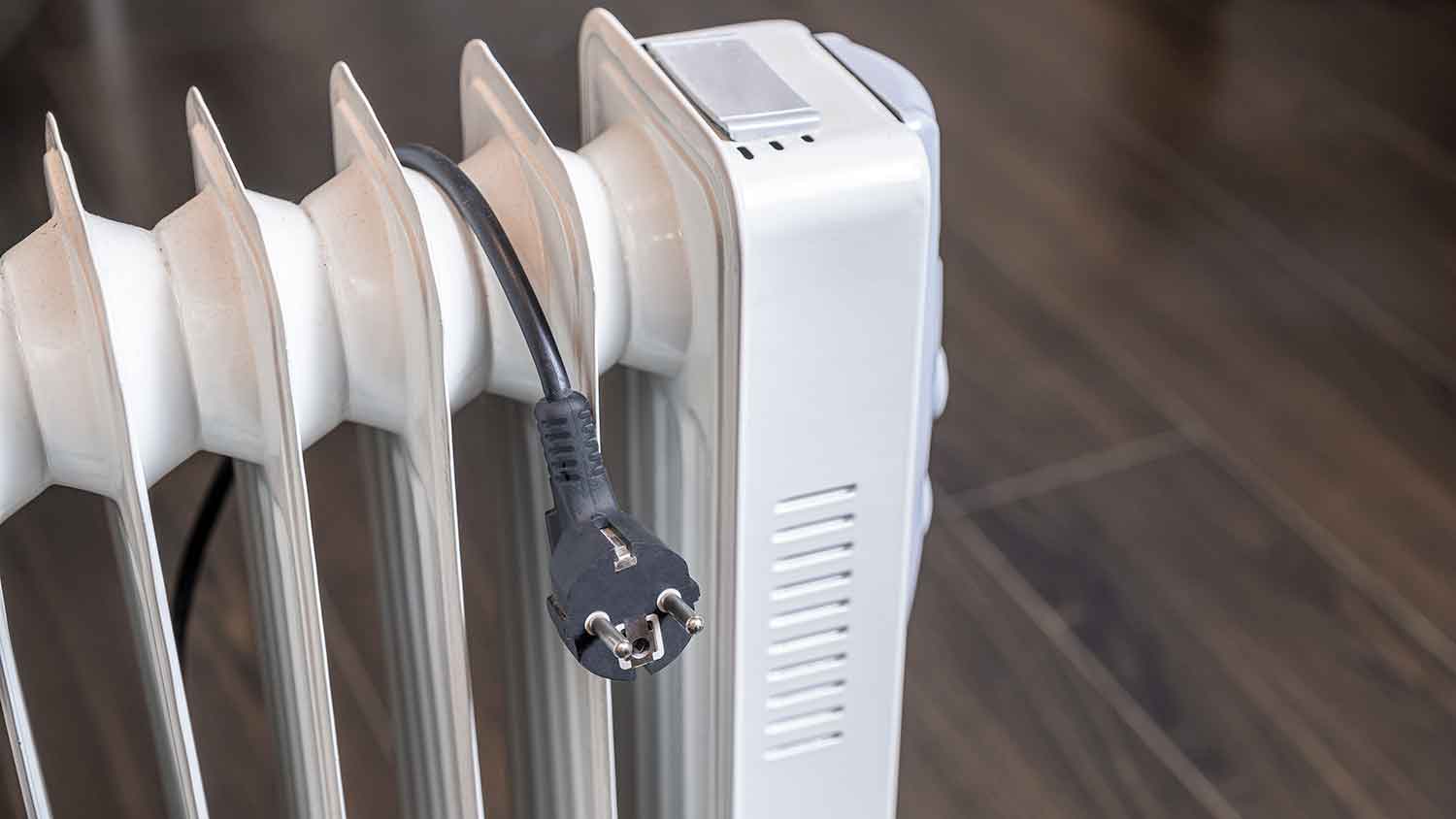
Electric radiators don’t rely on a basement boiler to send hot water or steam throughout your house. Instead, they convert electricity into heat. Electric radiators come in several different types, from ceramic wall-mounted plates to portable, oil-filled columns. You can plug them into a wall outlet and adjust them with built-in temperature controls.
"Avoid using space heaters for primary heat because they can be dangerous and are inefficient."
— Yashar Mosaferi, President of Klondike AC, British Columbia, Canada
| Pros | Cons |
|---|---|
| Independent of central heating system | Tend to have higher operating costs |
| Very quick to heat up | May not provide as long-lasting heat |
| Simple to install and easy to move | May be more limited in capacity |
Best for: Extra heating or heating in rooms farther away from central heat
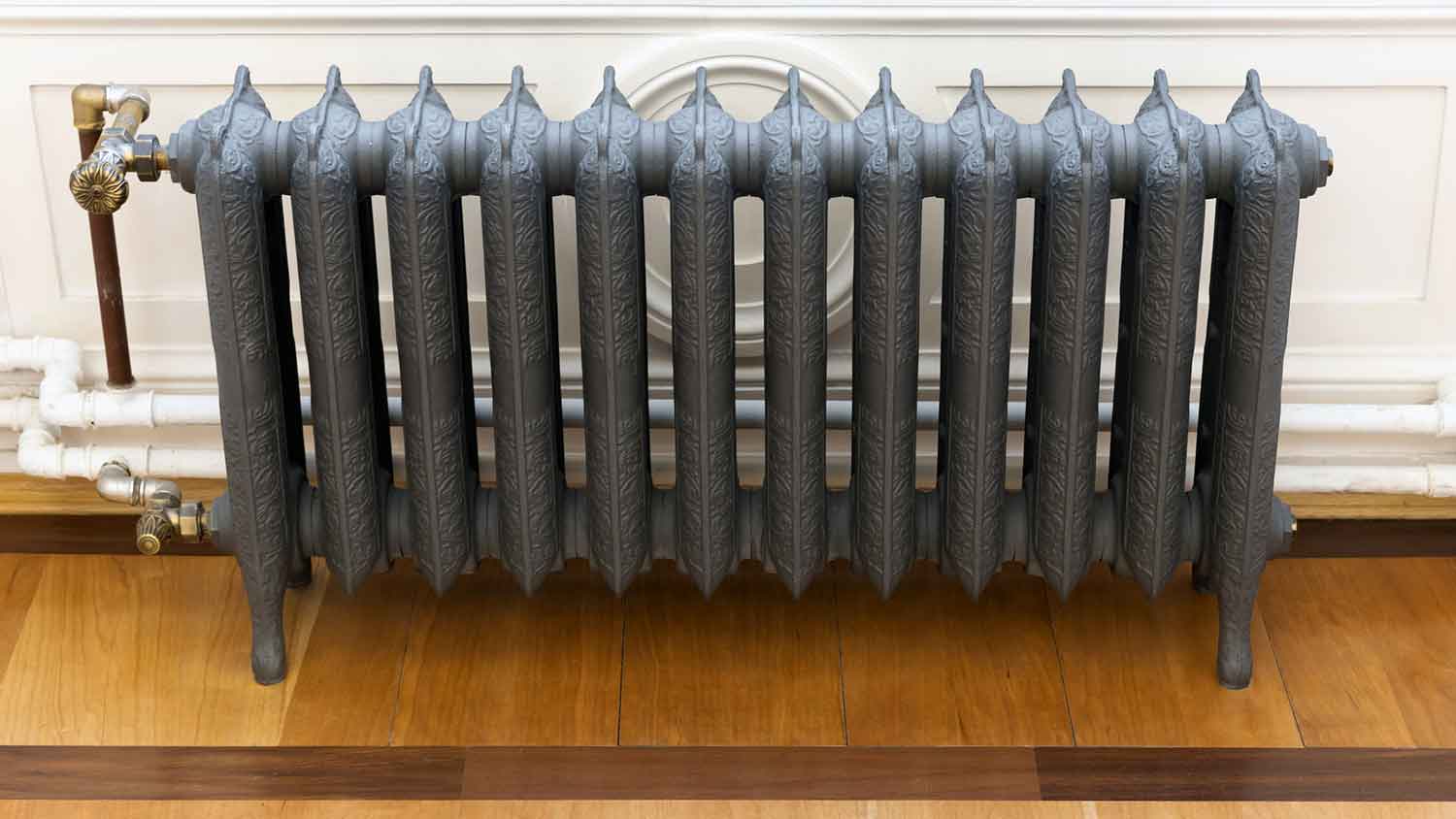
Cast iron radiators can be either steam-operated or hot water-operated. You’ll often see cast iron radiators in historic homes. They’ve been used since the 18th century, but many people still enjoy them today because of the long-lasting warmth they provide and the timeless, classic look.
| Pros | Cons |
|---|---|
| Vintage aesthetic | Very bulky and heavy |
| Highly durable | Not easily moved or maintained |
| Holds heat for a long time | Can be slow to heat up |
Best for: Older homes and structures that can support their size and weight

Panel radiators are slimmer than cast iron radiators and are often made of steel or another type of metal. They’re warmed with hot water, not steam, and there are different types of panel radiators depending on if you need a lot of heat or just a little extra heat.
| Pros | Cons |
|---|---|
| Modern, low-profile look | Not as durable as cast iron |
| Come in low-heat or high-heat options | Don’t retain heat as long |
| Space-saving | May not heat larger spaces as effectively |
Best for: Contemporary home design styles and small spaces
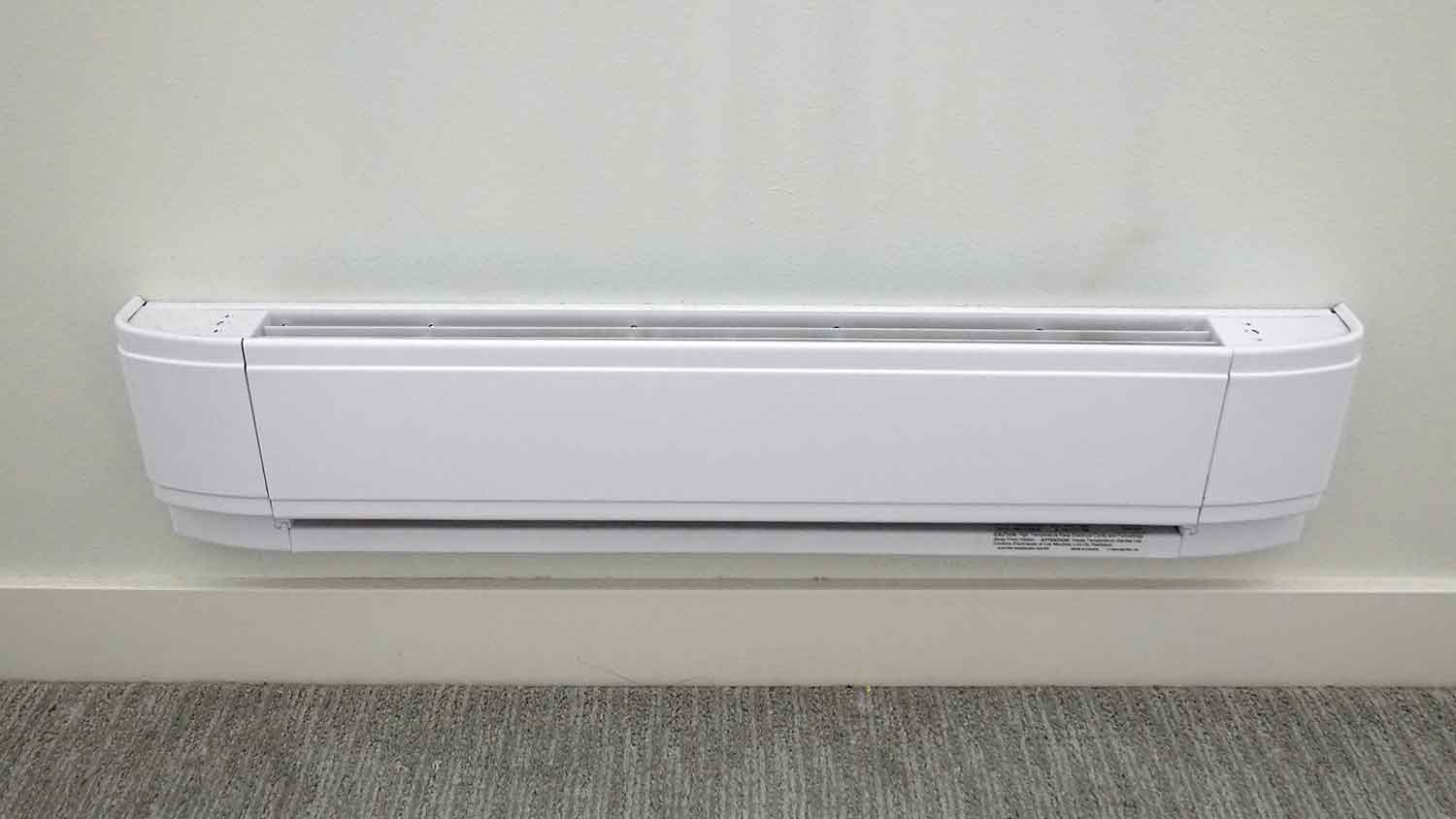
Popular in home additions, baseboard radiators are small, low-profile heaters mounted along the baseboard of a room. They can use hot water or electricity to generate heat and are quiet and efficient.
| Pros | Cons |
|---|---|
| Energy-efficient | May not be suitable for large spaces |
| Quiet | Some baseboard radiators can be hot to the touch |
| Don’t take up as much wall space | Can block some furniture placement |
Best for: Smaller spaces and those looking for a low-profile radiator solution

Towel radiators are often made of metal or ceramic and feature horizontal and vertical rails warmed by hot water or electricity. When you drape a towel over one of the rails, the radiator warms it, so you’ll feel like you’re at a spa every time you finish a bath or shower.
| Pros | Cons |
|---|---|
| Warm, toasty towels | Not as efficient at heating entire areas |
| Small-space heating | Can be expensive to install and operate |
| Luxury amenity | May require new electrical wiring installation |
Best for: Bathrooms
If you’re shopping for a new radiator, consider the following as you make your decision:
Existing radiator system: Check whether you have a steam or hot water radiator system. Steam systems will have a sight glass on the boiler, and hot water systems will have a circulating pump and expansion tank.
Room size: For smaller spaces, a baseboard, towel, or panel radiator may be adequate. For larger spaces, consider a panel or cast iron radiator.
Style: For Victorian homes, Craftsman-style homes, and older homes, a traditional cast-iron radiator might be the right aesthetic choice. If your home is more modern or contemporary in style or design, you might prefer a panel or baseboard radiator, instead.
Cost: Radiator replacement costs depend on the heating system, the style and material of the radiator you choose, and whether you need professional installation. Most people pay $1,500 for a radiator, and electric baseboard radiators tend to be the least costly.
Call a local HVAC company for help in evaluating your existing system and selecting the best new radiator for your home.
We needed a couple of minor plumbing repairs done. Lopez Plumbing arrived on time and was very respectful of our time and space and have reasonable advice about the maintenance of equipment and proactive steps to take.
Quality plumbing work!!! Very responsive and transparent about all costs up front. Overall I was very satisfied with his professionalism and quality of work!!!
Overall much higher quality work, now the walls are plumb and square, tile pattern is correct and well balanced. The bathroom design is exactly the same other than a few minor details where they suggested a different angle or joint but if you could see them side by side there's no comparison...
I have rental properties and every time I hired this company for any plumbing-related issue, they always solved the problem. I would not work with anyone else, I trust them completely. I have been using this company for years.
We purchased a home that was need of a bit of work and I had great difficulty finding good firms that charged fair prices and performed well. I first hired JMZ to clean the yard and cut the grass. I saw Jose's truck in the area and called the number on the side. In the past two years Jose and...
Andrew and his crew at Islander painting are precise and clean up after their work. I would definitely hire them again!!!
Armend Gojani at Rite Plumbing and Heating is incredibly nice, courteous, knowledgeable and honorable. He has been a pleasure to work with, and so far most of the plumbing problems have been fixed - one more to go.
Clayton and his associate were fantastic! He accommodated my request to remove a considerable amount of stuff from a residential home in Port Orange (even changing my original appointment date very last minute at my request). He was early to the job, careful not to remove or damage anything...
Professional, courteous and great quality. Would hire the team again.
Tell me that unless I pay $95 they will not come out to give me an estimate
From average costs to expert advice, get all the answers you need to get your job done.

New York plumbers are some of the priciest in the nation. High cost of living and aging buildings contribute to their hefty price tag. Learn the other factors affecting how much a plumber costs in New York City.
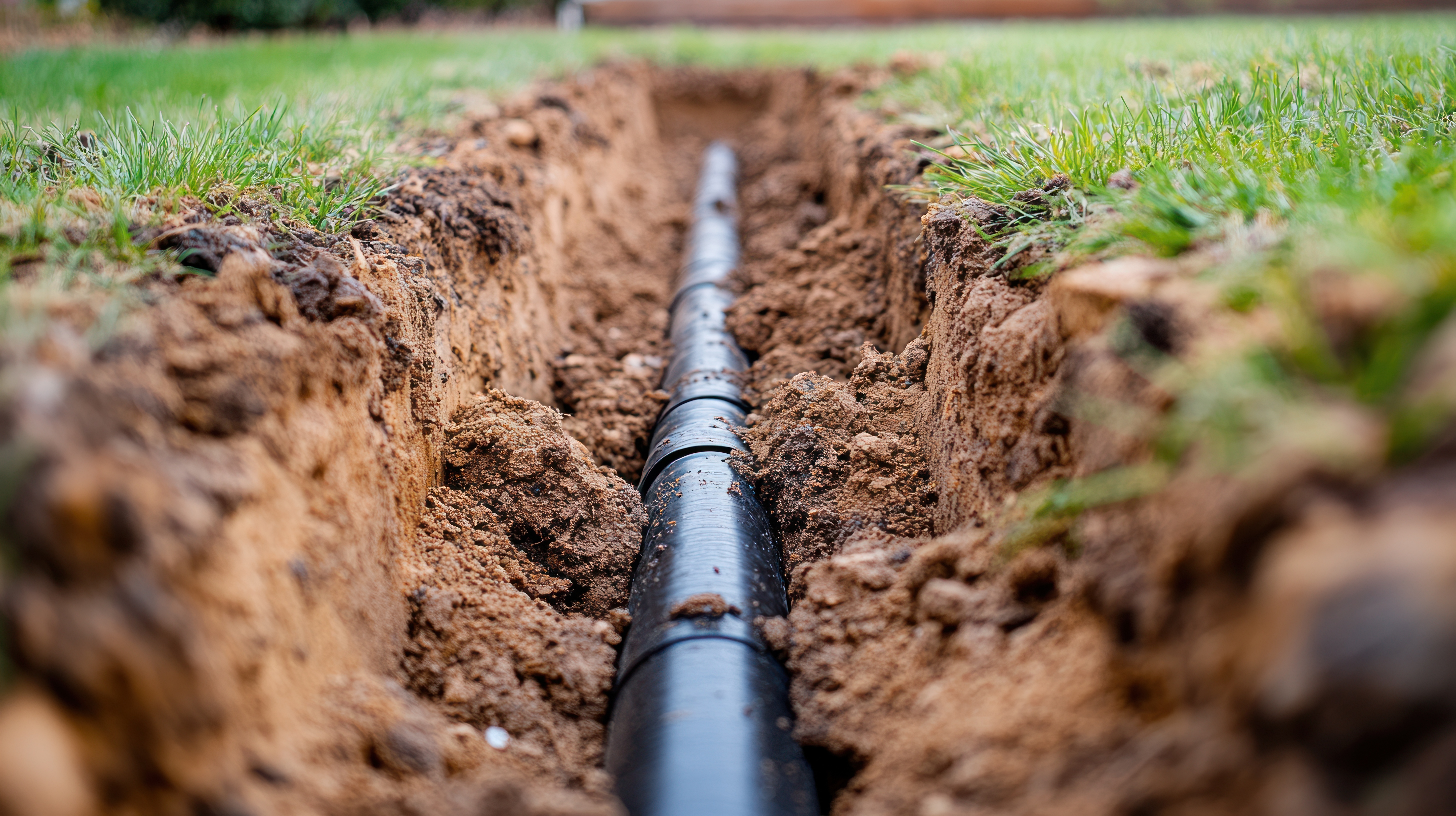
Discover the primary factors that affect your main water line replacement cost in New York, including length, materials, and the necessary installation method.
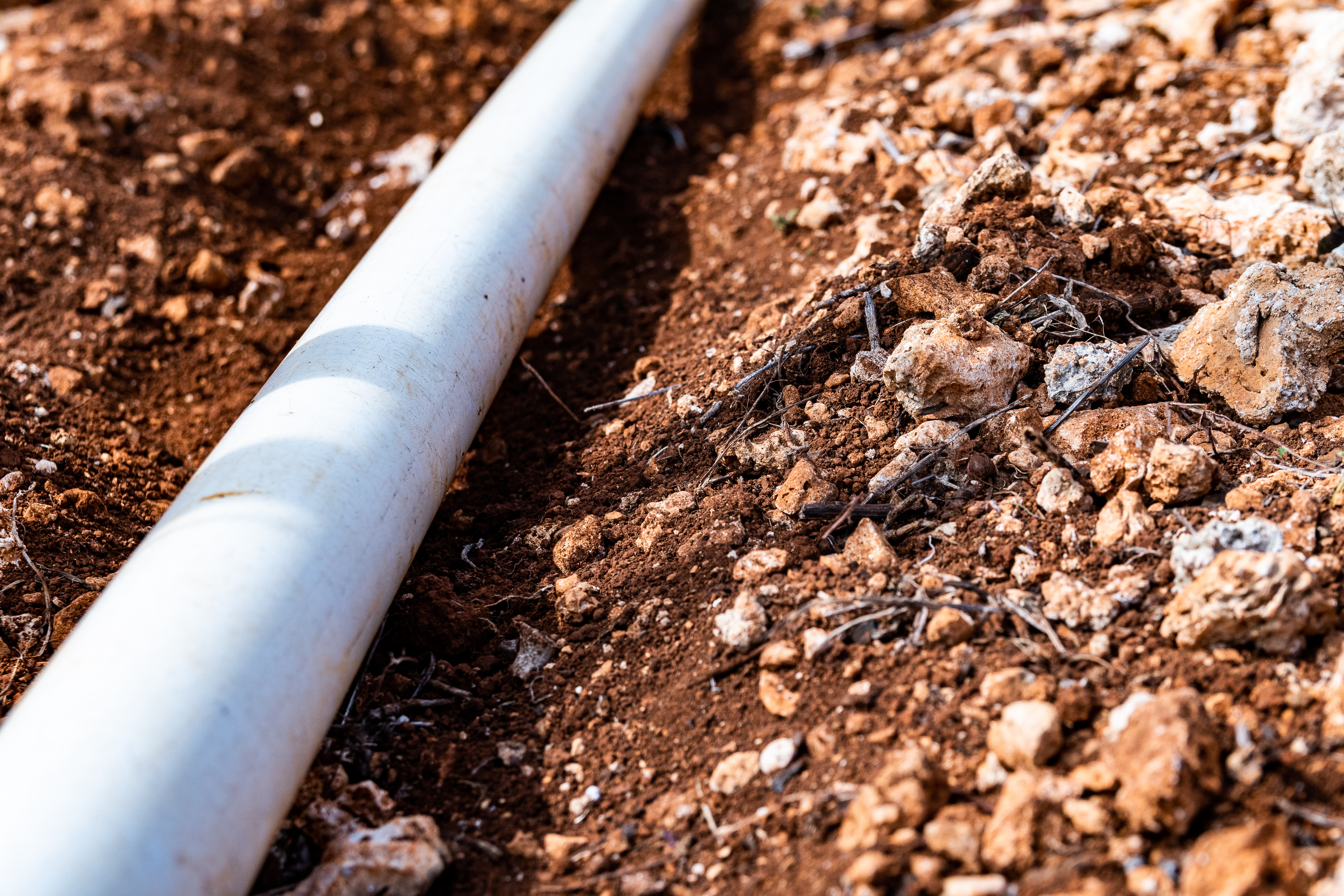
Discover the pricing factors that will affect your main water line repair cost in New York, including the repair type, size, and accessibility challenges.

Winter can be particularly harsh on your plumbing—from water heater issues to frozen pipes. As the weather gets chilly, use these tips to prepare your home and avoid a costly winter plumbing leak.

Follow this guide to learn how to install a kitchen sink drain, from shutting off the water supply to lowering the drain outlet and connecting the P-trap.

Plumbing a bathroom starts with knowing the steps for a successful DIY project. Follow this guide to learn how to plumb a bathroom yourself.